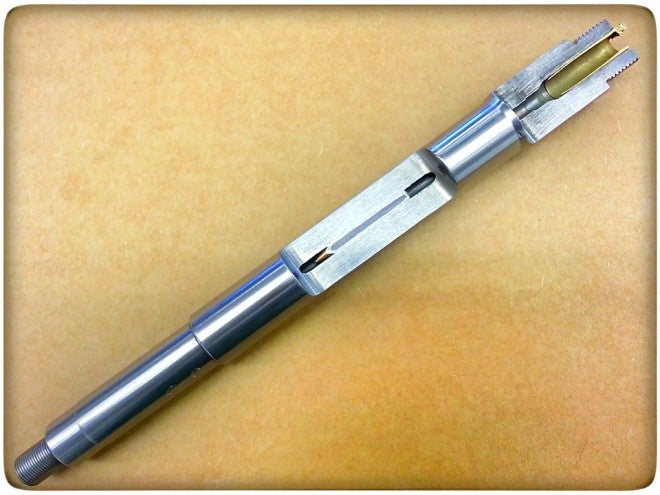It should go without saying to never use ammunition in your firearm that is not written on the side of the firearm… Well, except in cases like .223 and 5.56, where the two are semi-interchangeable, or in the case of .38 and .357, where one is compatible with the other, but not vice-versa. So “feed a gun only ammo it’s chambered for” is a good handy rule of thumb, but as always things are just a little bit more complicated than that. There are a whole host of resources available on the internet talking about ammunition-chamber compatibility, but one thing that isn’t as thoroughly discussed – for obvious reasons – is the bad combinations. Fortunately, the Sporting Arms and Ammunition Manufacturer’s Institute, better known as SAAMI, publishes a document annually covering some of the worst common ammo-firearms combinations which should be avoided in all circumstances. The document is hyperlinked above for reading at your leisure, and below is what SAAMI says about the list:
The discharge of ammunition in a firearm that is not designed to shoot that ammunition can be dangerous and can result in serious injury or death to the user and/or bystanders, as well as damage to the firearm. This unsafe condition is caused by an excessive build-up and/or release of high-pressure gas in a firearm’s chamber, barrel and/or action beyond which the firearm is designed to withstand. Therefore, in the interest of safety, you should use only ammunition of the caliber or gauge designated by the firearm manufacturer for use in that firearm. Markings indicating the correct caliber or gauge of ammunition to be used in a firearm are usually found on the firearm’s barrel, frame or receiver
One way to verify that you are using the correct ammunition is to check the head stamp on the ammunition to confirm that it matches the caliber or gauge markings placed on the firearm by the firearm’s manufacturer. Some types of ammunition do not have markings on the head stamp of the cartridge. In that case, check the original ammunition packaging to determine its caliber. If you have any doubt about the caliber of the ammunition, you should not use the ammunition until you have it examined by a qualified person who can determine its caliber. Remember just because a round of ammunition can fit into a firearm’s chamber, barrel or action does not mean it is safe to use that ammunition in the firearm.
Due to the availability of many different shapes and sizes of ammunition and firearms, there are countless unsafe ammunition-firearm combinations such that a comprehensive list of unsafe combinations is neither feasible, nor practicable. Below is a list of some unsafe combinations that are well known because of somewhat similar chamber and ammunition dimensions.
If the caliber or gauge is not clearly marked on the firearm, or if it appears the original markings on the firearm have been altered or modified in any way, do not use the firearm as serious injury or death could result to the user and/or bystanders, as well as damage to the firearm.
Similarly, SAAMI has not published voluntary recommended practices or procedures for re-chambering of firearms. It is possible the re-chambering of a firearm may not have been done properly or may not have been properly marked on the firearm. If the caliber or gauge marking is missing or altered in any way, you should not use the firearm. You should instead have the firearm examined by a qualified person to determine what caliber or gauge ammunition can safely be used in that firearm.
Stay safe, folks!
 Your Privacy Choices
Your Privacy Choices
